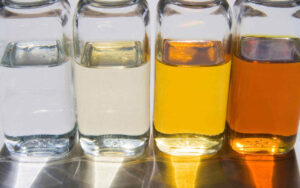Explore the distinctions between API Base Oil Groups I, II, and III—saturates content, sulfur levels, viscosity index, and refining processes—through a detailed comparison table and analysis of essential chemical parameters for lubricant performance.

Introduction
API divides mineral base oils into three groups based on their chemistry and refining process. These distinctions drive performance in wear protection, thermal stability, oxidation resistance, and clarity. Understanding the classification helps you select the right base oil for any industrial or automotive application.
API Base Oil Groups
Group I
Saturates: Less than 90 %
Sulfur: Greater than 0.03 %
Viscosity Index (VI): 80–120
Refining Process: Solvent refining
Characteristics: Darker amber color, moderate oxidation stability, economical choice for standard applications.
Group II
Saturates: At least 90 %
Sulfur: 0.03 % or less
Viscosity Index (VI): 80–120
Refining Process: Hydrocracking/hydroprocessing
Characteristics: Lighter color, improved clarity, better oxidation and thermal stability than Group I.
Group III
Saturates: At least 90 %
Sulfur: 0.03 % or less
Viscosity Index (VI): Above 120
Refining Process: Severe hydrocracking plus catalytic dewaxing
Characteristics: Very clear (“water white”), excellent oxidation resistance, often marketed as “synthetic” oils.
Comparison Table
| Property | Group I | Group II | Group III |
|---|---|---|---|
| Saturates (%) | < 90 % | ≥ 90 % | ≥ 90 % |
| Sulfur (%) | > 0.03 % | ≤ 0.03 % | ≤ 0.03 % |
| Viscosity Index (VI) | 80–120 | 80–120 | > 120 |
| Refining Process | Solvent refining | Hydrocracking | Severe hydrocracking + dewaxing |
| Color & Clarity | Amber to dark | Light amber | Water‑white |
| Oxidation Stability | Moderate | Good | Excellent |
| Typical Applications | Economy-grade oils | Mainstream automotive & industrial oils | High‑performance/synthetic oils |
Identifying Base Oil Groups from Lab Data
Saturates Content:
- < 90 % indicates Group I
- ≥ 90 % indicates Group II or III
Sulfur Level:
- 0.03 % confirms Group I
- ≤ 0.03 % indicates Group II or III
Viscosity Index (VI):
- 80–120 is common to Groups I & II
- 120 identifies Group III
Visual Color & Clarity:
- Darker, amber hues point to Group I
- Water‑white clarity is typical of Group III
Essential Parameters in a Base Oil Chemical Analysis Report
Physical Properties
Kinematic Viscosity @ 40 °C & 100 °C: Flow behavior and VI calculation.
Viscosity Index (VI): Temperature‑viscosity performance.
Density @ 15 °C: Impacts blending ratios and performance.
Pour Point: Lowest temperature at which fluid still flows.
Flash Point: Volatility and safety indicator.
Chemical Properties
Sulfur Content: Core group classification metric.
Saturates vs. Aromatics: Defines the oil’s chemical family.
Acid Number: Corrosion potential indicator.
Base Number: Relevant if detergent/dispersant additives are present.
Water Content: Moisture impacts stability and corrosion.
Oxidation Stability (RPVOT): Oil’s resistance to oxidative breakdown.
Color (ASTM D1500): Quick visual check of purity and refinement.

Howdy! Someone in my Facebook group shared this site
with us so I came to take a look. I’m definitely enjoying the information. I’m
book-marking and will be tweeting this to my followers!
Wonderful blog and great style and design.